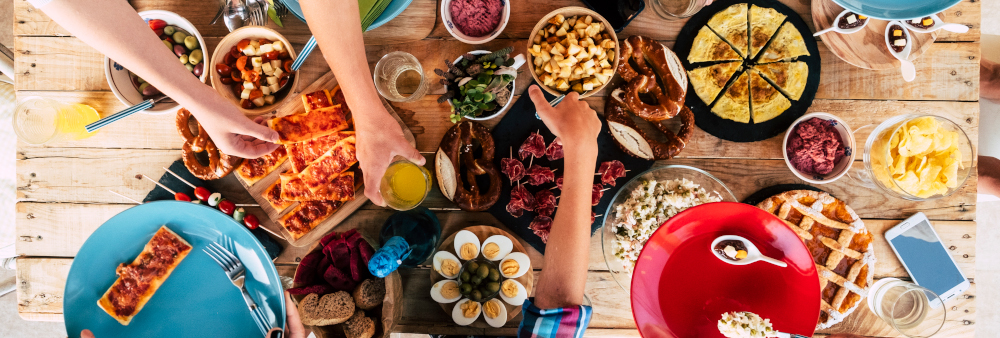
The Leftovers That Raised Us, Kota, Amasi, and the Politics of Fridge-foraging
You learn early in South Africa that a fridge is not just an appliance. It’s a battleground, a bank vault, a museum, and sometimes, a therapist. It hums quietly in the background of our childhoods, its contents a rotating cast of what’s left, what’s hidden, and what you dare not touch unless you’re brave or starving, or both.
The real heroes of our childhoods were never Michelin-starred chefs. They were the women who could make a meal out of that one sad drumstick from Sunday’s braai, the last inch of pap, and whatever sauce was congealing at the back of the Tupperware drawer. And if you were lucky, there was kota, not the fresh, Instagrammable kind, but the Frankenstein loaf your cousin made with leftover slap chips, atchar, polony, and someone’s forgotten Vienna.
Kota wasn’t just food. It was resourcefulness in a paper bag. It taught you proportions, how to layer flavour and survive high school with R10 and a dream. You didn’t order kota, you made it, with whatever your house gave you. And that taught you everything you needed to know about improvisation, pride, and how to stretch one meal into four.
Then there’s amasi, the sharp, creamy queen of the bottom shelf. Amasi is where dignity meets fermentation. It taught you patience, especially if your home brewed it in old Coca-Cola bottles with a cloth over the lid. In some homes, it was poured over pap. In others, it was gulped straight from the jug, thick and alive. It was breakfast, lunch, and sometimes the only thing between you and an empty belly.
Fridge-foraging wasn’t an activity; it was a rite of passage. You’d open the fridge a dozen times hoping something new appeared, like it was a slot machine for snacks. You learned to spot the container that had meat in it, versus the one with soggy salad or dangerous-looking stew that had changed colour since Tuesday. The plastic ice-cream tub never had ice-cream. That was always grandma’s curry or Sunday’s chakalaka. The margarine tub? Probably beans. Or worse, a weird experiment no one wanted to claim. But you opened it anyway, because in the politics of hunger, risk is part of the game.
Fridge-foraging also taught diplomacy. You don’t eat the Sunday rice meant for Monday lunch. You don’t finish the Coke if you didn’t buy it. And for heaven’s sake, you don’t eat someone’s clearly marked leftovers unless you’re ready to fight about it. Names written in black marker were legally binding. And nothing, I repeat nothing, caused more family tension than the disappearance of someone’s KFC wing. But there was joy in it too. The thrill of finding that one last rusk in the jar. The surprise custard cup behind the eggs. Or the ancient Christmas biscuit tin on top of the fridge that might still have something sweet inside, unless it now held sewing needles.
 For many of us, the fridge was the first place we learned about class, about saving, about how some people had options and others had sauces. It was a map of the month’s fortunes. At the beginning: full cream milk, yoghurts, fresh fruit. By the 25th: pap, pickle juice, and prayer. Payday brought rotisserie chicken and cheese slices. End-of-month brought egg sandwiches and silence.
For many of us, the fridge was the first place we learned about class, about saving, about how some people had options and others had sauces. It was a map of the month’s fortunes. At the beginning: full cream milk, yoghurts, fresh fruit. By the 25th: pap, pickle juice, and prayer. Payday brought rotisserie chicken and cheese slices. End-of-month brought egg sandwiches and silence.
And yet, nobody complained. Because the fridge had personality. It had history. It told stories of what we’d cooked, what we’d celebrated, and what we’d scraped together. There were smells, good and questionable. There were relics, old birthday cake, the chutney bottle with dried goo on the cap, and that one bottle of hot sauce that lived there longer than some cousins.
It’s in that chaos we learned to be grateful. To be inventive. To never throw anything away unless it walked out on its own. We watched our parents transform leftovers into miracles. We learned that cold pap could be grilled into crispy perfection. That chicken stew was always better the next day. That reheated curry could solve emotional damage. And the politics didn’t stop at what you ate. It extended to when you could eat. Some things were reserved. Some were collective. Some were claimed with body language alone. If your uncle came back from night shift and found his fridge stash tampered with, heaven help the house. If mom said the yoghurt was for the baby, you’d better not even look at it.
Now, when you open your own fridge, full of oat milk and meal-prep containers, there’s a silence. A distance. Everything’s neat, dated, compartmentalised. But it lacks drama. It lacks the wild energy of looking at ten half-empty tubs and somehow making it into supper. That was art. That was resilience. That was South African cooking before it had a name. Sometimes, just to feel something again, you might pour a bit of amasi into a chipped mug. Or eat the last of the polony straight from the packet. Or microwave yesterday’s mince in a saucer instead of a proper plate. Not because you have to, but because you remember.
You remember standing in front of the fridge at 10 p.m., barefoot, hoping there was something small you could chew while watching Generations reruns. You remember hiding the last kota under your bed so your cousin wouldn’t steal it. You remember the fridge door held together with masking tape and hope.
The leftovers raised us. The quiet clatter of Tupperware lids at midnight. The shared spoon dipped into one tub of custard. The way one kota could feed three kids and a neighbour’s child. We might not have had recipe books or fancy appliances, but we had skills. We had instinct. We had a fridge full of maybe’s, and we made it work.
And that, more than any Michelin star, is the real taste of home.




